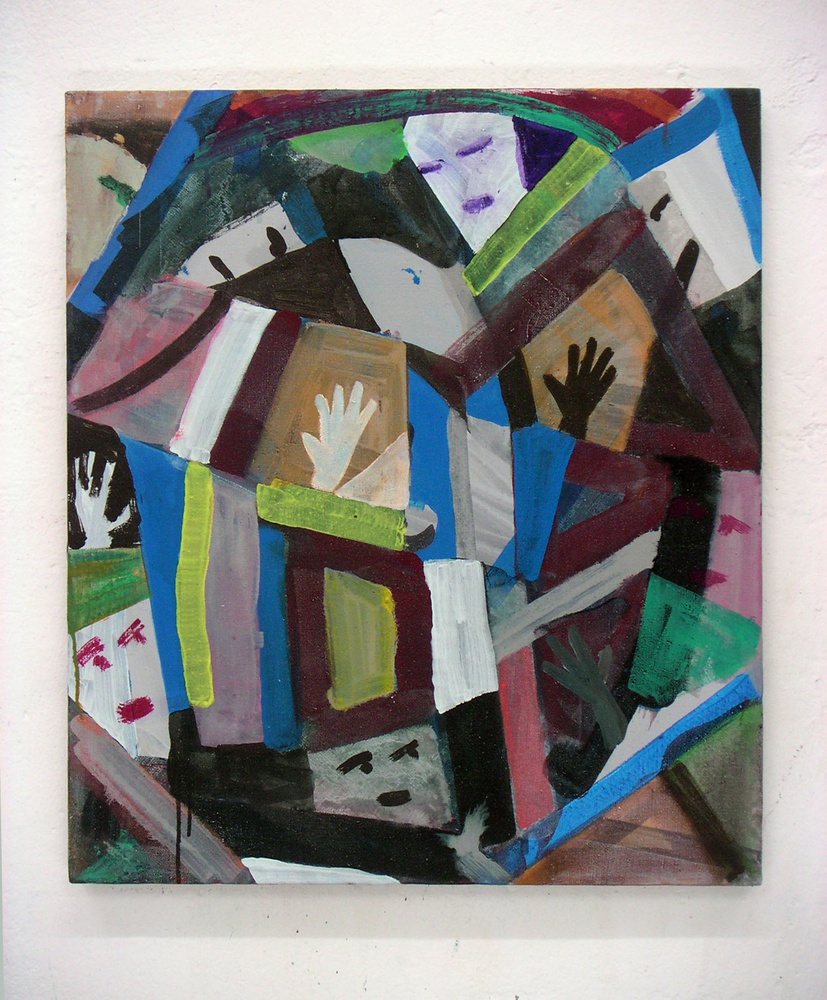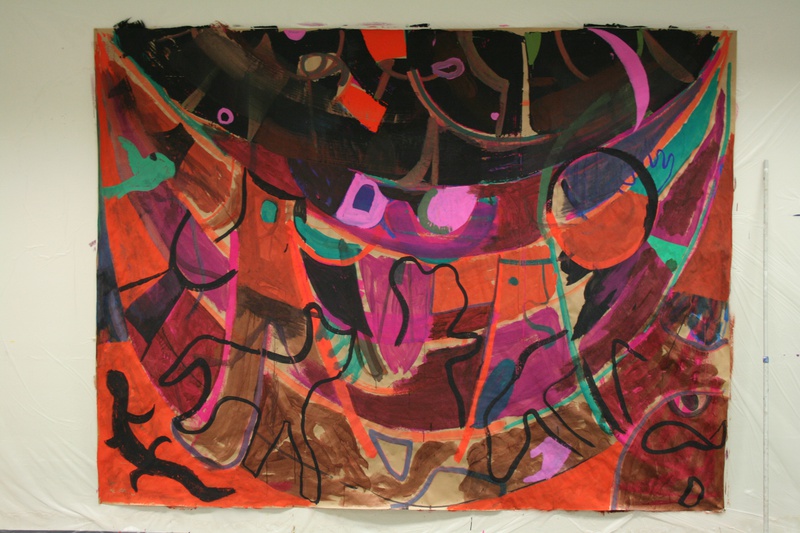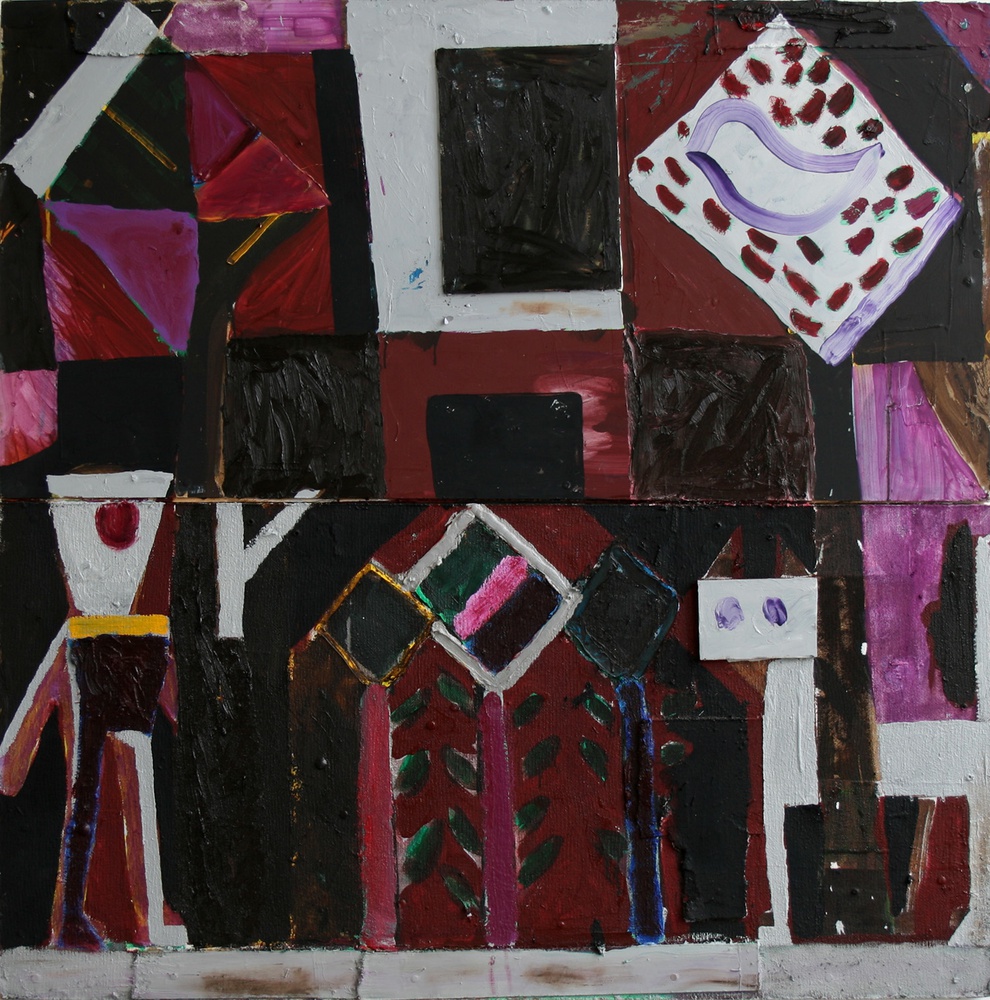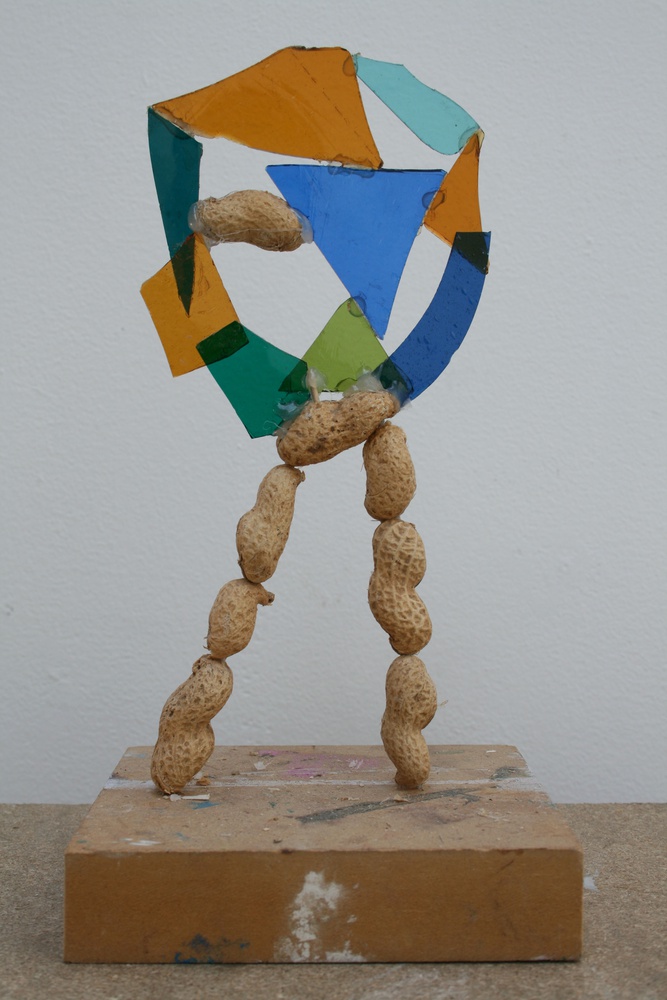In his paintings, Derk Thijs combines small, primitively drawn human figures with abstract motifs and patterns. When Thijs decided that his paintings needed a three-dimensional counterweight, he started making sculptures. These sculptures can be seen as paintings that interact with their immediate surroundings. It is as if they come out of the wall and end up in the same moment and space of the visitor. Just like his paintings, these sculptures look simple and as if they have been randomly composed with elements of wood, paper, paint, threads, bits of coloured glass or even eggs and peanuts.
Both in his paintings and his sculptures, Derk Thijs strives for universality: art that is timeless and does not conform to current trends in the (art) world. He looks, instead, for key issues and to put things into perspective. This is how he attempts to eliminate the boundaries between different categories, for example between art historical styles such as modernism, primitivism, religious art and folk art. He achieves this by using elementary, primal shapes that everyone recognizes, such as a circle or a ladder.
What’s more, the circles have an important symbolic role: they represent the world in all its facets. Derk Thijs believes that everything is connected with each other and can be looked at from different perspectives. Repeatedly constructing a circle represents this conviction that everything belongs together and is part of something larger. Putting together these different elements is essential for the artistry of Derk Thijs: elements only become meaningful when they are part of a coherent whole. Every single work of his also represents a whole.







